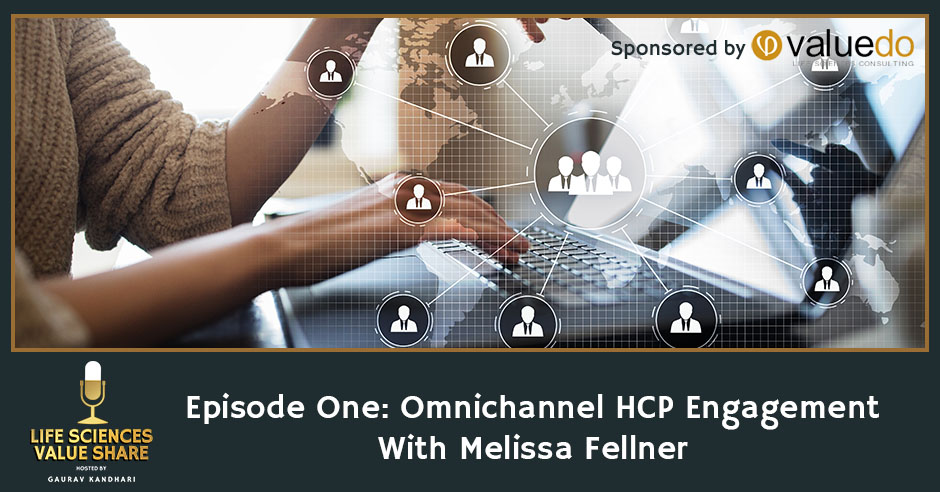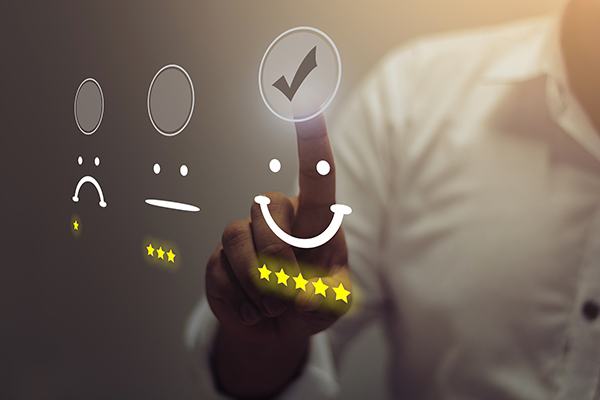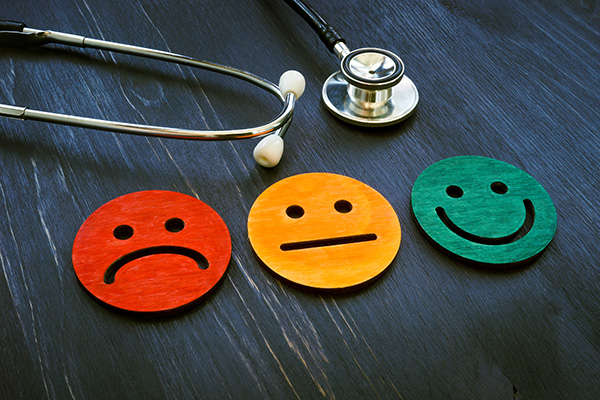
What is omnichannel and what is all the fuss about it? How is it different from what the pharmaceutical industry has been doing in terms of HCP engagement? On today’s show, Gaurav Kandhari and his guest, Melissa Fellner, look at why they implement omnichannel and why it is relevant. Melissa is a pioneer in the omnichannel marketing space, having been in the pharmaceutical space for over 20 years. She has been in roles ranging from a scientist in clinical trial management, HCP and consumer marketing, and she is now a senior marketing leader for AstraZeneca. Learn how to fully understand and implement omnichannel HCP engagement in the pharmaceutical space. It’s okay to start small and learn from experience. Trust in your customers, and you should be fine.
—
Watch the episode here
Listen to the podcast here
Episode One: Omnichannel HCP Engagement With Melissa Fellner
I have with me a very close friend and an industry professional, Melissa Fellner, who spent twenty-plus years in the pharmaceutical industry, starting as a scientist in the clinical trial management space, moving on to managing market access and then patient services roles then graduating to HCP and consumer marketing roles. She is now a Senior Marketing Leader in the global role at AstraZeneca here in the US. A very warm welcome to you, Melissa. Thanks for taking the time.
Thanks for having me, Gaurav. It’s great to see you.
Likewise. What we want to cover today is a very interesting topic, an evolving and futuristic topic, as some of the industry professionals say in the pharma industry, at least. We are going to cover omnichannel marketing and omnichannel HCP engagement in the pharma industry. What we have done is we have decided to do a two-part episode with Melissa and she’s kindly agreed to do two episodes. In the first episode, we cover what is omnichannel, what’s the fuss about omnichannel and how is it different from what we have been doing until now in terms of HCP engagement?
Moving on to why omnichannel in pharma and why it’s relevant, that would be episode one. In episode two, we are going to deep dive more into the “how” of omnichannel. If omnichannel is important, how the marketers, the medical affairs folks, the cross-functional teams and even the sales organization should be looking at omnichannel and using that to benefit from a customer engagement perspective? We’ll probably end up with some best practices and the lessons we have learned in omnichannel. Both Melissa and the ValueDo team have worked on different omnichannel initiatives. We will probably try to bring some of those learnings to you in episode two. So let me pause and ask you to say anything else you want to highlight before we jump into episode one.
It’s great the people are starting to think about the customer and creating the right experience for them.
I think that’s a pretty comprehensive list. Let’s start with that.
Alright, thank you Melissa. What do you think, Melissa, we have done some work together, but you’ve almost become like a pioneer in the omnichannel marketing space. You have spoken and written also in different forums. What comes to your mind when we use the word omnichannel?
What is omnichannel and how is pharma doing omnichannel these days? I both love and hate this question. I’ll tell you why. I love this question because it means that someone is starting to think about the customer and how to create the right experience for their customer. They’re hearing buzzwords like omnichannel and saying, “How do I do that? I think that makes a customer’s experience better. It helps my brand. It helps my service. What is that? How do I get that? How do I do that?” I love it for that reason.
I hate it because there’s not one single definition and there are so many gradients of omnichannel. Gaurav, we’ve had this debate over and over of what is that line of doing multichannel to omnichannel? Is it the number of channels that you’ve connected? Is it the data that’s flowing? Is it automation? Is it using a certain type of technology? Is it having the right cross-functional teams all involved and participating in that engagement and that experience? There’s not one single answer but I think that what matters at the end of the day is what your customers receive and how they feel about your brand engagement.
If it feels “omnichannel,” if it’s the pinnacle of them driving what that brand does for them, with your engagement, reacting to their needs and meeting their needs, it doesn’t matter what else is happening behind the scenes to create that. I will say there is some consensus around factors of channels and mixes and automation so that this happens seamlessly, that you may say and may see as some parts of the definition. But to me, it’s really about, “Is your experience creating and meeting the needs of your customers?”
Multichannel in different parts of the world versus omnichannel. Some of the folks asked this question. What are we doing differently? It’s a fancy word, omnichannel but how is it different from multichannel? What’s your view on that?

The way that I describe multichannel and the difference between omnichannel is that multichannel is when you’re using different channels to reach a customer and giving them the messages you want them to have. There are ways to create a good experience doing that. You can create a consistent story through those channels. One of the most obvious areas is when a brand is not meeting its customer’s needs is when they get different information in different channels, so it’s disjointed. There are ways to create a very orchestrated experience through multichannel.
With omnichannel, the biggest difference is that each engagement builds on the last one and is meeting a customer’s need that might even evolve or change throughout time in the relationship they have with a brand or a service. Meeting their need and understanding and knowing what happened before, how that customer reacted and what they need next, that idea of next best action, next best channel, next best moment, next best message and content. Service is the epitome of omnichannel. That’s what’s different than multichannel.
I’ll be paraphrasing when I say this, but, in a way, the pharma industry has been driven in a very product-centric way. It’s always almost every time been about the product. The rep goes in front of the HCP and says, “I have this to sell. This is going to help your patient. I’ve got a lot of good data and science behind it. Please prescribe it.” It’s nothing about the customer. It’s nothing about what the HCP is preferring in terms of the content, in terms of the channel, even in terms of what they want to listen to. Do they want to listen to the science behind the product or do they want to listen to the benefits for their patients?
You’re almost saying multichannel to omnichannel is a step in the direction of thinking more customer-centric, more personalized content and channels for the customer versus product-centric. It’s like you have a product, you have multiple channels and you’re going to throw all that at your customer and see if something sticks and they’ll end up prescribing your product. I know I’m being almost ruthless in saying that, but I just wanted to get that across.
I see the point that you’re trying to make with that. I agree. It’s historically been a very product-focused industry, disease education and products, and selling your key messages. We evaluate our success many times based on the key messages being remembered and regurgitated back by doctors. A big message recall has been a big KPI used to show success. At the end of the day, is it really meeting your needs? Is it really changing behavior? If you don’t look at that, you’re never going to know. If you don’t measure it, you’re never going to know if it’s actually working.
This idea has come through much more strongly over the past few years in the pharma industry with patient centricity and this idea of having a North Star on the customer and who you’re helping, what they need in life and how we can do more than provide medicine or a message about something to help them live in a better way than they ever thought possible.
When I evaluated what’s happening across the industry, we see that about 5% of companies are all in. They are racing ahead with leveraging technology and full omnichannel, automated AI integration to create that very experienced and very personalized customer experience that is based on a lot of data and even thinking and forecasting what somebody might need. Then there’s the majority who are in the multichannel space and starting to integrate a bit more to get to that more customer-centric lens.
It requires huge transformations in companies and the bigger pharma companies have more resources than a smaller biotech but at the same time, it’s also like pushing a boulder uphill. There’s a subset of companies that are saying, “We can’t invest or do a lot about this at this time. We’ll continue doing what we’ve been doing – that’s working for us.” See that bell curve of adoption. A lot of the adoption is not necessarily the technology. The technology exists and it has existed. It’s how you use it. What do you use it to do?
There are still rules and compliance aspects that are being worked out about what data can be shared between team members and channels. What can be used in what way? How long do you have to keep the data? How do you safeguard the data? How do you make sure that you can’t identify any person through the data? There are a lot of aspects that need to be determined in order to use some of these technologies and data in these new ways.
This is a good segue into the next question. We understand the pharma industry is regulated. There’s a lot of compliance. We’re talking about patient identifying information. We are talking about data privacy at a different level as compared to the consumer industry. How do you feel about pharma versus non-pharma? The Amazons and the Googles of the world have really embraced omnichannel for the past few years. Is there anything that comes to your mind in terms of what we can learn from X-pharma?
-.”Why can’t you do what Amazon does?” In some ways, I’m jealous of non-pharma. My creative agency likes to tell me that the people on their team go to the pharma side of the business to kill their creativity because of all of our regulations. I think that it creates a fun challenge. What we see is that pharma, or outside of pharma, is a lot of great best practices of understanding a customer, following their journey, mapping their engagement points, building on that to continue to be a part of their lives. You visit a store. You can look at stuff in a store.

You can remember it on your phone. It can follow you back to wherever you go from there with follow-up emails. “You didn’t check out this. Do you think this rug might fit your table that you’re looking at?” It creates this experience that goes with you. That brings that brand into your life in ways that maybe you didn’t even imagine you needed. That aspect of how you create your brand, your product and your service to fit into someone’s life is something that we’ve learned a lot from. Some of the ways how we do it are different in pharma because it is a more regulated area.
When I think about the content, when we create content, we need to create it for five different segments of customers. Within each of those, we have four different personas. Suddenly, we have twenty different sets of content that all need to get reviewed and approved by large committees and go through a very rigorous process to even be placed out into the world. Those are some of the complexities and resource limitations that come into play when we think about comparing pharma with non-pharma as it relates to omnichannel.
The other part of it is the evolution, the life cycle of the pharma industry, these are starting days. We have a complexity of our end consumers not being our customers. That adds to it a bit as well because we, like you said, have different personas. Segmentation has been done in a very different way till now, and now you’re starting to question whether you should know more about your customer. It takes a few miles to even get to where you can start implementing it. I think the first part is to understand it, internalize it and the organization moves in that direction from a cultural perspective.
You think about designing it well is when you can think about what is possible from a personal perspective with the rep in the field and then what can be possible from a non-personal perspective. That is very well answered, thank you, Melissa. We covered a lot about the “what” part of it. We covered a bit of the “why” as well. Can you throw a bit of light on “why” omnichannel in pharma, precisely from a perspective of what is the value to the HCP and what is the value to the rep and what is the value to the organization, like the pharma manufacturer?
There has been so much change over the past couple of years. Our customers are not going to respond if we’re not meeting their needs.
I don’t think that companies can afford to keep doing what they’ve been doing in the old pharma model where the rep relies on only face-to-face, and you deliver your two key messages and you count your success in sales. There has been so much change that we’ve all experienced over the past couple of years and our customers are not going to respond if we’re not meeting their needs.
The only way to meet their needs is to understand them and to understand beyond how they’re prescribing your drug or your class of drugs but to understand more about who they are as a person, what they’re trying to accomplish with their patient care in their professional life. When you know that and where they get information, what’s important to them, when and how you can best engage them to provide education, to have a discussion, a dialogue about their needs, then it becomes much more about your story and how it fits into their lives and meeting their needs.
That builds that trust. That builds a relationship that goes beyond a face-to-face visit. That is important to carry through into the digital world especially as access continues to change for reps to get to doctors. I know a lot of reps. We’ve talked about MythBusters. A lot of reps worry when they hear the word omnichannel, “This is just a play by marketing to replace me, replace my job.”
But truly, the folks that are in the field meeting with customers, medical, science liaisons, key account managers, the rep force and salesforce, they are all orchestrators of that customer experience and are critical components of your brand’s relationship with the people that care for our ultimate customer, the patients. At the end of the day, that’s who we’re all trying to support in the best possible way.
The more that we can understand how the doctors are trying to do that, the better we can support them with that. When they feel that and they see that in our engagements, we’re bringing what’s relevant and helping, that’s what will change behaviors. If you don’t bring that and you don’t take the time to do that and understand that, then you’ll be left behind your competitors.

I know we are rushing, but we can go hours and hours on this, but I think we will probably take a pause there in terms of what we wanted to cover on episode one. We covered what is omnichannel, what is relevant for pharma and why omnichannel is in pharma. We want to continue this discussion into episode two when we get inside a pharma organization and say, “How do we drive omnichannel? Where do we start? What are the strategic pillars? What are the key work streams that need to be taken into account to drive or to initiate a good omnichannel transformation?“ Any final thoughts before we close the episode, Melissa?
I hope that we answered your question about what is omnichannel and why would I consider doing this for my customer. As a parting thought, I would say, if you’re feeling unsure about the customer experience that you’re creating, go and ask them. Run some surveys, find a way to get their input on what that feels like because that’s how you’ll know.
I love the sound of the marketer thinking about the field force there. I think that is very powerful because that is something that is almost ignored when we are driving these transformations. It’s like you said a couple minutes ago, they are the field forces, the orchestrators of it. Marketing is going to help shepherd the salesforce part. Ultimately, the uptick and the off-take are going to happen when the field force embraces it. Thank you so much, Melissa, for taking the time today. I’ll see you in a few and then we’ll cover episode two together. Thank you for reading episode one. Have a good one.
Important Links
About Melissa Fellner
 I was inspired to work in science and medicine development when I was 8 and my grandfather died of bladder cancer. I didn’t understand why there wasn’t a medicine that couldn’t save him and it became my life mission to create and bring life-saving medicines to people in need.
I was inspired to work in science and medicine development when I was 8 and my grandfather died of bladder cancer. I didn’t understand why there wasn’t a medicine that couldn’t save him and it became my life mission to create and bring life-saving medicines to people in need.
I am currently Global Marketing Director, Respiratory & Immunology, at AstraZeneca in Gaithersburg, MD. With a passion for science, digital health, and helping patients, I have more than 20 years of US and global experience in drug development and commercialization. I’ve led strategic planning and development of several innovative initiatives such as patient-centricity and omnichannel, and am currently managing global marketing and brand performance of a key AZ respiratory biologic. In the past, I held positions in scientific research, clinical development, market access, commercialization consulting, and brand marketing, with experience in many therapeutic areas, including oncology, neurology, infectious disease, and respiratory science.
I have a BS in Biochemistry and Cell Biology, Minor in Economics, MS in Biology, and MBA from the University of California‒San Diego.
